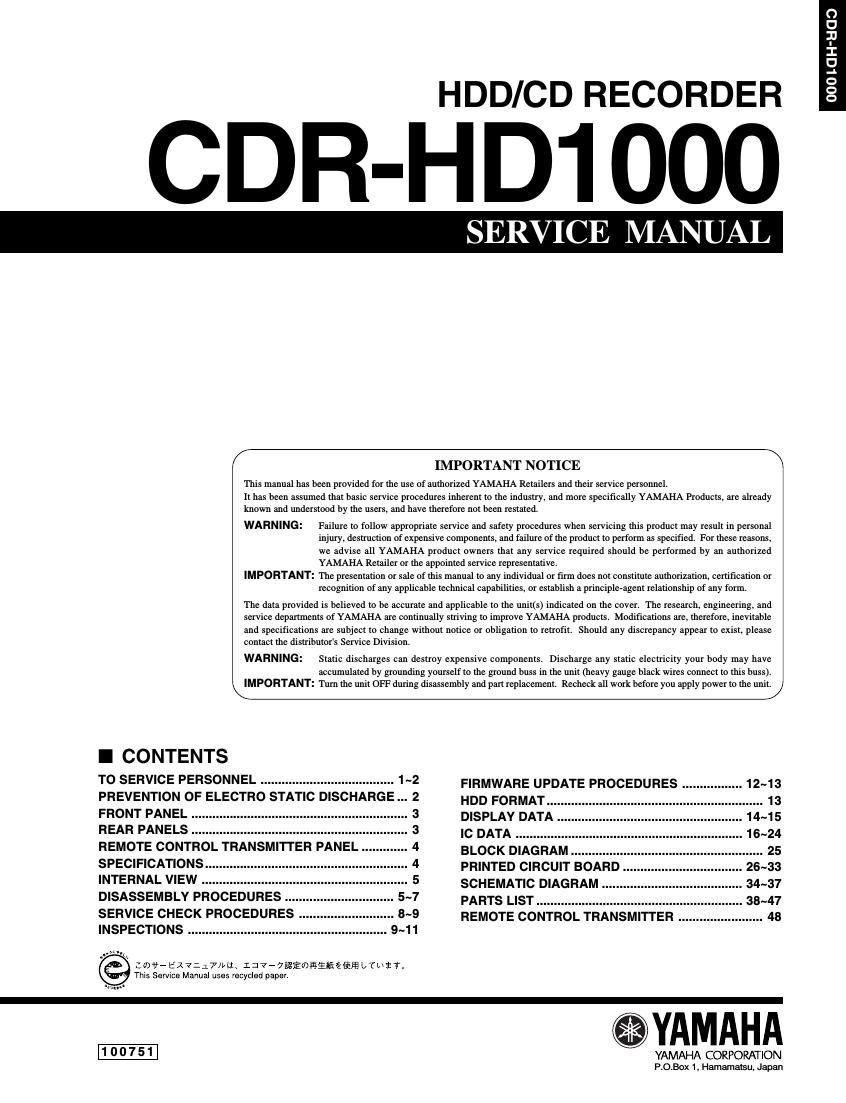Yamaha cdrhd1000
This is the 46 pages manual for yamaha cdrhd1000.
Read or download the pdf for free. If you want to contribute, please upload pdfs to audioservicemanuals.wetransfer.com.
Page: 1 / 46

This is the 46 pages manual for yamaha cdrhd1000.
Read or download the pdf for free. If you want to contribute, please upload pdfs to audioservicemanuals.wetransfer.com.
